France Le Mans- The Enduring Evolution of the 24 Hours of Le Mans: A Century of Speed, Safety, and Innovation. (Part 1)
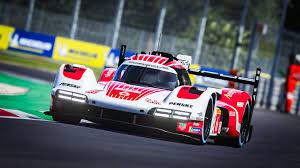
The 24 Hours of Le Mans stands as a monumental pillar in the annals of motorsport, widely regarded as one of the world's most prestigious and challenging races. Held annually near the city of Le Mans, France, it distinguishes itself from fixed-distance events by crowning the victor as the car that covers the greatest distance over a grueling 24-hour period. This unique format, combined with its historical depth as the oldest active endurance racing event, has positioned Le Mans not merely as a competition but as a relentless crucible for automotive development and human perseverance. Its enduring significance is encapsulated by its inclusion in the Triple Crown of Motorsport, alongside the Monaco Grand Prix and Indianapolis 500. This report delves into the remarkable evolution of the 24 Hours of Le Mans, tracing its journey from its foundational origins to its current status as a global spectacle and a pioneering hub for sustainable automotive technology.
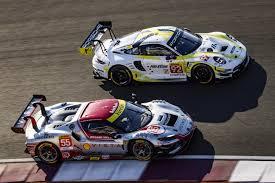
I. Foundational Years: Birth of an Endurance Icon (1923-1939)
The genesis of the 24 Hours of Le Mans is rooted in a vision that transcended mere speed, aiming instead to test the reliability and durability of automobiles available to early consumers. Conceived by Georges Durand, a member of the local La Sarthe council and a key figure in the Automobile Club de l'Ouest (ACO), alongside motorsports journalist Charles Faroux and industrialist Émile Coquille, the race was first held on May 26-27, 1923. The motivation was clear: to provide manufacturers with a proving ground for cars equipped with features like rearview mirrors, headlights, and horns – elements essential for road-going vehicles.
The inaugural event saw 33 cars, including marques such as Lorraine-Dietrich, Bentley, Chenard & Walcker, Delage, and Bugatti, embark on the original 17-kilometer public road circuit. The #9 Chenard & Walcker Sport, piloted by André Lagache and René Léonard, secured the first victory, traveling at an average speed of 92 km/h.
Initially, the race was conceived as part of a triennial competition, the Rudge-Whitworth Cup, where the winner would be determined by target distances achieved over three consecutive 24-hour races. This complex system, however, was swiftly abandoned by 1928, giving way to the simpler and now iconic criterion of declaring the winner based on the furthest distance covered in a single 24-hour period. This rapid adaptation of the classification criteria from a multi-year, target-based system to a straightforward "greatest distance in 24 hours" principle demonstrates an early and pragmatic understanding that the true measure of endurance and reliability was best captured by continuous performance within a single race. This simplification solidified the fundamental competitive principle that defines Le Mans to this day, illustrating how foundational rules are refined to better serve the event's core purpose and enhance its sporting integrity.
The early races were largely dominated by French, British, and Italian manufacturers, with Bugatti, Bentley, and Alfa Romeo establishing prominent reputations. Bentley, in particular, achieved notable success, securing a string of victories from 1927 to 1930.
The 1920s and 1930s marked a period of rapid innovation at Le Mans, with significant advancements in engine performance, aerodynamics, and tire technology. This era saw the race truly come into its own as a proving ground for automotive development. The unique characteristics of the Circuit de la Sarthe, particularly the exceptionally long Mulsanne Straight, exerted immediate pressure on manufacturers. This environment fostered rapid advancements, as evidenced by Bugatti and Alfa Romeo adopting highly aerodynamic bodywork in the late 1930s. This development was not merely about increasing engine power but optimizing how cars moved through the air for maximum speed and efficiency over sustained periods. The Mulsanne Straight thus became a natural, high-speed laboratory for aerodynamic development, foreshadowing its continuous influence on the pursuit of speed through aerodynamic efficiency throughout Le Mans' history. The race faced its first major interruptions in this period, being cancelled in 1936 due to general strikes in France, and then enduring a prolonged ten-year hiatus with the outbreak of World War II in 1939.
II. Post-War Revival and the Imperative of Safety (1949-1960s)
Following extensive reconstruction of circuit facilities damaged during World War II, the 24 Hours of Le Mans triumphantly resumed in 1949, attracting significant renewed interest and participation from major automobile manufacturers. This revival underscored the race's unique component of French heritage and its growing international stature. The 1949 race notably marked Ferrari's first victory at Le Mans, with the 166MM driven by Luigi Chinetti and Peter Mitchell-Thomson, signaling the rise of a new dominant force.
The formation of the World Sportscar Championship in 1953, of which Le Mans became a prominent part, further intensified factory-backed competition. Manufacturers such as Ferrari, Aston Martin, Mercedes-Benz, and Jaguar began sending multiple works-backed cars to compete for overall wins, elevating the stakes and competitive intensity.
The intense competitiveness of this era sometimes resulted in tragedy, most notably the catastrophic 1955 Le Mans disaster. During the race, Pierre Levegh's car crashed into a crowd of spectators, resulting in the deaths of over 80 people. This horrific incident served as a profound turning point, leading to the widespread introduction of stringent safety measures. These improvements were implemented not only at the Circuit de la Sarthe itself but also significantly influenced safety regulations throughout the broader motorsport world. The incident fundamentally altered how safety was perceived, prioritized, and implemented across global motorsport, forcing a paradigm shift from a focus solely on speed and endurance to an equally critical emphasis on participant and spectator safety. The subsequent rebuilding of the pit complex, which was razed and rebuilt further back from the track to widen the pit straight, is a tangible example of this direct impact. Le Mans, tragically, became a reluctant pioneer in motorsport safety, demonstrating that even the most prestigious events must prioritize human life over pure competitive spectacle, ultimately making the sport safer for everyone involved.
Despite the enhanced safety standards, the relentless pursuit of performance meant that cars continued to become faster. The transition from open-cockpit roadsters to closed-cockpit coupés, for instance, allowed speeds to exceed 320 km/h (200 mph) on the Mulsanne Straight. A defining rivalry of this period emerged with the entry of Ford, specifically with the GT40. This car was famously conceived with the singular purpose of defeating Ferrari at Le Mans, following Enzo Ferrari's rejection of Ford's attempt to acquire his company. The Ford GT40 achieved its objective, securing four consecutive overall wins from 1966 to 1969, a remarkable feat that effectively ended Ferrari's dominance in that era and underscored the power of focused, factory-backed development in response to intense competition. Beyond the technical regulations and the intrinsic desire for innovation, the fierce competition and the pursuit of brand prestige among manufacturers have historically been a powerful, almost organic, force driving technological advancement and pushing the limits of automotive performance at Le Mans. These rivalries transformed the race into a high-stakes battleground for engineering supremacy.
III. A Century of Innovation: Le Mans as a Technological Testbed
From its inception, the 24 Hours of Le Mans has consistently served as a crucible for automotive innovation, with a demonstrated history of many advancements migrating directly from the racetrack to public roads. This "trickle-down effect" is a core tenet of its purpose. The race's stringent regulations and their strict application have been a hallmark for a century, making Le Mans an ideal and demanding testing ground where new technologies are proven under extreme duress, ultimately benefiting both racing cars and their drivers. The rules, such as mandating four-stroke piston engines fueled by petrol or diesel with fresh air intake, were intentionally designed to ensure that the technologies developed are easily transferable to production cars, reinforcing its role as an industrial testbed.
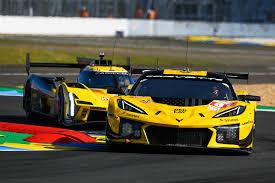
Early Engineering Milestones:
-
Front-Wheel Drive (1927): A revolutionary step in vehicle propulsion, Jean-Albert Gregoire, with funding from Maurice Fenaille, developed the Tracta, the first front-wheel drive car to compete at Le Mans. While it finished seventh, a "colossal 40 laps" behind the winning Bentley, its debut marked a significant challenge to conventional rear-wheel drive design, demonstrating the race's openness to radical concepts.
-
Rear-Mounted Engine (1949): Following World War II, the 1949 race saw the introduction of the first car with a rear-mounted engine, a Renault 4CV entered by privateer Camile Hardy. This directly challenged the long-standing tradition of front-mounted engines, famously encapsulated by Enzo Ferrari's metaphor: "Horses pull the plow, they do not push it". Despite the Renault 4CV retiring early due to engine problems, the concept proved viable, and Ferrari himself later adopted the technology, achieving the first victory for a rear-engine car in 1963, illustrating the compelling force of proven performance at Le Mans.
Aerodynamic and Grip Advancements:
-
Slick Tires and Rear Wings (1967): This year marked a dual revolution in vehicle dynamics. Michelin introduced the first slick tires, which, with their smooth, treadless surface, immediately demonstrated superior grip. Concurrently, Chaparral pioneered the use of rear wings for generating downforce, attaching "very strange-looking" wings to their cars. They further innovated with a pedal system to adjust the wing's angle, marking the "birth of the active rear wing". The immediate impact was evident, with the number 46 Alpine posting the first-ever lap time under four minutes. Rear wings, initially a novel concept, are now considered standard on any racing car, highlighting their fundamental importance in modern aerodynamics.
Propulsion Evolution:
-
Turbocharged Engines (1974): Porsche was the first manufacturer to utilize a turbo engine at Le Mans, which boosted power through turbocharging. In its debut year, a Porsche with a turbo engine entered by Martini Racing finished an impressive second. The first turbo victory at Le Mans was achieved in 1976 by Jacky Ickx and Gijs van Lennep, sparking an "ongoing battle between aspirated and turbo" engines that continues to this day, with manufacturers like Toyota switching to six-cylinder turbos as late as 2016.
-
Diesel Engines (2006): While diesel technology had existed since the 19th century, its self-ignition principle was long deemed unsuitable for motor racing. However, steady progress in the field led to Audi making history by using a diesel engine at the Circuit de la Sarthe for the first time in 2006. Audi's diesel-powered car promptly won the general classification in 2006, demonstrating the viability and competitiveness of diesel technology in endurance racing, and the manufacturer continued to use it successfully.
-
Hybrid Engines (1998): America's Don Panoz introduced the first car to race with a hybrid petrol/electric engine in 1998, combining a six-liter Ford engine with an electric motor powered by energy recovered from the brakes. Although Panoz's car did not qualify for the race, indicating the technology was ahead of its time, hybrid engines are now a "hallmark of modern racing" in both Formula 1 and the WEC, with Audi celebrating the first hybrid car win at Le Mans in 2012.
Several revolutionary innovations initially struggled or failed to achieve immediate success: the Tracta FWD was "colossal 40 laps" behind , the Renault 4CV rear-engine retired after only 21 laps , the Delettrez diesel retired early , and the Panoz hybrid "did not qualify". Yet, all these technologies (front-wheel drive, rear-mounted engines, diesel, hybrid) later became standard or even dominant in their respective applications. This pattern suggests that Le Mans acts as a high-pressure, real-world testbed where even initial setbacks provide crucial data, expose weaknesses, and provide the impetus for refinement and further development. The race doesn't just showcase perfected technology; it exposes the rough edges of nascent innovations, allowing them to mature. Le Mans' enduring value as an innovation hub lies not merely in showcasing immediate breakthroughs, but in providing the extreme conditions necessary for iterative development and the eventual maturation of revolutionary automotive technologies. It validates concepts through their ability to survive, adapt, and ultimately perform under the most demanding competitive duress.
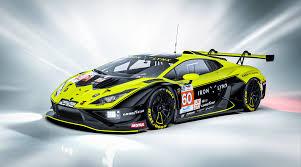
Enzo Ferrari's famous quote about horses pulling, not pushing , vividly illustrates a historical engineering debate regarding optimal engine placement. Similarly, the "ongoing battle between aspirated and turbo" engines highlights a continuous, evolving technical discussion within the sport. These are not just technical choices but often reflect differing philosophical stances on performance, efficiency, and engineering elegance. Le Mans, by allowing diverse approaches within its regulations (e.g., LMH vs. LMDh in the Hypercar class, hybrid vs. non-hybrid options ), becomes a direct arena for these competing engineering philosophies to be tested head-to-head, proving their practical merits under race conditions. The race serves as a dynamic, high-stakes forum where differing engineering philosophies are tested and validated, driving continuous refinement and demonstrating the practical advantages and disadvantages of various technical solutions in real-world, extreme conditions.
Beyond the engine, Le Mans has also been the proving ground for numerous other innovations that later found their way into production cars, including disc brakes, fog lamps, the general concept of front-wheel drive (beyond the specific Tracta application), and quartz-iodine headlights. These less-heralded advancements underscore the race's pervasive influence on automotive technology.
Table 1: Key Technological Innovations at Le Mans and Their Impact
|
Year of Debut |
Innovation |
Key Proponent/Car |
Initial Impact/Performance at Le Mans |
Long-term Significance/Adoption in Motorsport and Road Cars |
|
1927 |
Front-Wheel Drive |
Tracta (Jean-Albert Gregoire) |
Finished 7th, 40 laps behind winner, but revolutionary concept
|
Challenged conventional design; FWD became common in road cars. |
|
1949 |
Rear-Mounted Engine |
Renault 4CV (Camile Hardy) |
Retired early (21 laps) due to engine problems
|
Ferrari adopted it for victory in 1963; standard for high-performance racing and sports cars. |
|
1967 |
Slick Tires |
Michelin |
Number 46 Alpine posted first sub-4-minute lap
|
Standard for racing tires, vastly improved grip. |
|
1967 |
Rear Wings (Active) |
Chaparral |
Immediate aerodynamic benefit; first active wing
|
Standard on all racing cars; influenced road car aerodynamics. |
|
1974 |
Turbo Engine |
Porsche (Martini Racing) |
Finished 2nd on debut; first turbo victory in 1976
|
Sparked ongoing "aspirated vs. turbo" debate; widespread in motorsport and production cars. |
|
1998 |
Hybrid Engine |
Panoz (Petrol/Electric) |
Did not qualify for race
|
Now a hallmark of modern racing (F1, WEC); Audi won with hybrid in 2012; increasing relevance for road cars. |
|
2006 |
Diesel Engine |
Audi |
Won general classification on debut
|
Demonstrated viability of diesel in endurance racing; Audi continued to use it successfully. |
|
Various |
Disc Brakes, Fog Lamps, Quartz-Iodine Headlights |
Various |
Enhanced safety and performance |
Widely adopted in production cars for improved safety and visibility.
|
IV. The Evolving Rulebook: Shaping Competition and Safety
The regulatory framework of the 24 Hours of Le Mans has undergone continuous adaptation, driven by the dual objectives of fostering intense competition and ensuring paramount safety.
Classification and Performance Balancing: The race's initial format involved the Rudge-Whitworth Triennial Cup, which was based on achieving target distances over three consecutive races. However, this complex system was abandoned by 1928 in favor of the simpler and more direct criterion of determining the winner by the furthest distance covered in a single 24-hour period. This fundamental shift established the core competitive principle.
In response to the global oil crisis of the early 1970s, organizers adopted the Group C regulations. This formula specifically limited the amount of fuel each car was allowed, thereby encouraging manufacturers to prioritize fuel economy and efficiency. Although the Group C formula was later abandoned, the principle of fuel economy remains crucial in modern endurance racing, as it directly reduces time spent during pit stops.
Today, the 24 Hours of Le Mans features a multi-class structure, comprising three main categories: Hypercar (the pinnacle prototype class), Le Mans Prototypes (LMP2), and production-based Grand Touring (LMGT3) cars. This multi-class system allows for diverse participation and multiple competitive battles simultaneously.
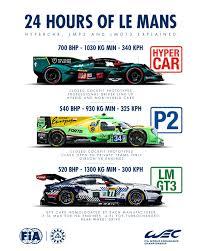
-
Hypercar (LMH/LMDh): This class debuted in 2021 as the successor to the LMP1 category. Its technical regulations were specifically designed to prevent cost escalations while simultaneously enabling greater variety in technical approaches and car aesthetics. Within Hypercar, two distinct platforms compete: Le Mans Hypercar (LMH), which offers manufacturers significant latitude in designing their prototype (e.g., engine type, hybrid or non-hybrid, rear-wheel or four-wheel drive), and Le Mans Daytona h (LMDh), which utilizes standardized chassis and hybrid systems from approved suppliers. Both LMH and LMDh cars compete under the Balance of Performance (BoP) system to ensure competitive parity.
-
LMP2: This class consists of closed-cockpit cars designed exclusively for racing, primarily for independent teams. The selling price of a new LMP2 car (excluding engine and electronics) is capped at €483,000, and teams are obliged to use one of four approved chassis manufacturers (ORECA, Ligier, Dallara, or Multimatic/Riley) mated with a standard 4.2-liter Gibson V8 engine. Driver line-ups in LMP2 must include at least one Silver or Bronze categorized driver, promoting amateur participation.
-
LMGT3: This class replaced the LMGTE technical regulations in 2024 and is based on the existing FIA GT3 platform, with specific adaptations for endurance racing. Eligibility is restricted to recognized manufacturers producing over 2,500 vehicles per year for street use, ensuring a strong link to road-going models and promoting a greater diversity of entries that "look like cars you've got half a chance of seeing on the road".
- Bicycle world
- Motorbike world
- E-Bike World
- Auto parts world
- MotorSports
- Auto World
- Art
- Causes
- Crafts
- Dance
- Drinks
- Film
- Fitness
- Food
- Jogos
- Gardening
- Health
- Início
- Literature
- Music
- Networking
- Outro
- Party
- Religion
- Shopping
- Sports
- Theater
- Wellness


